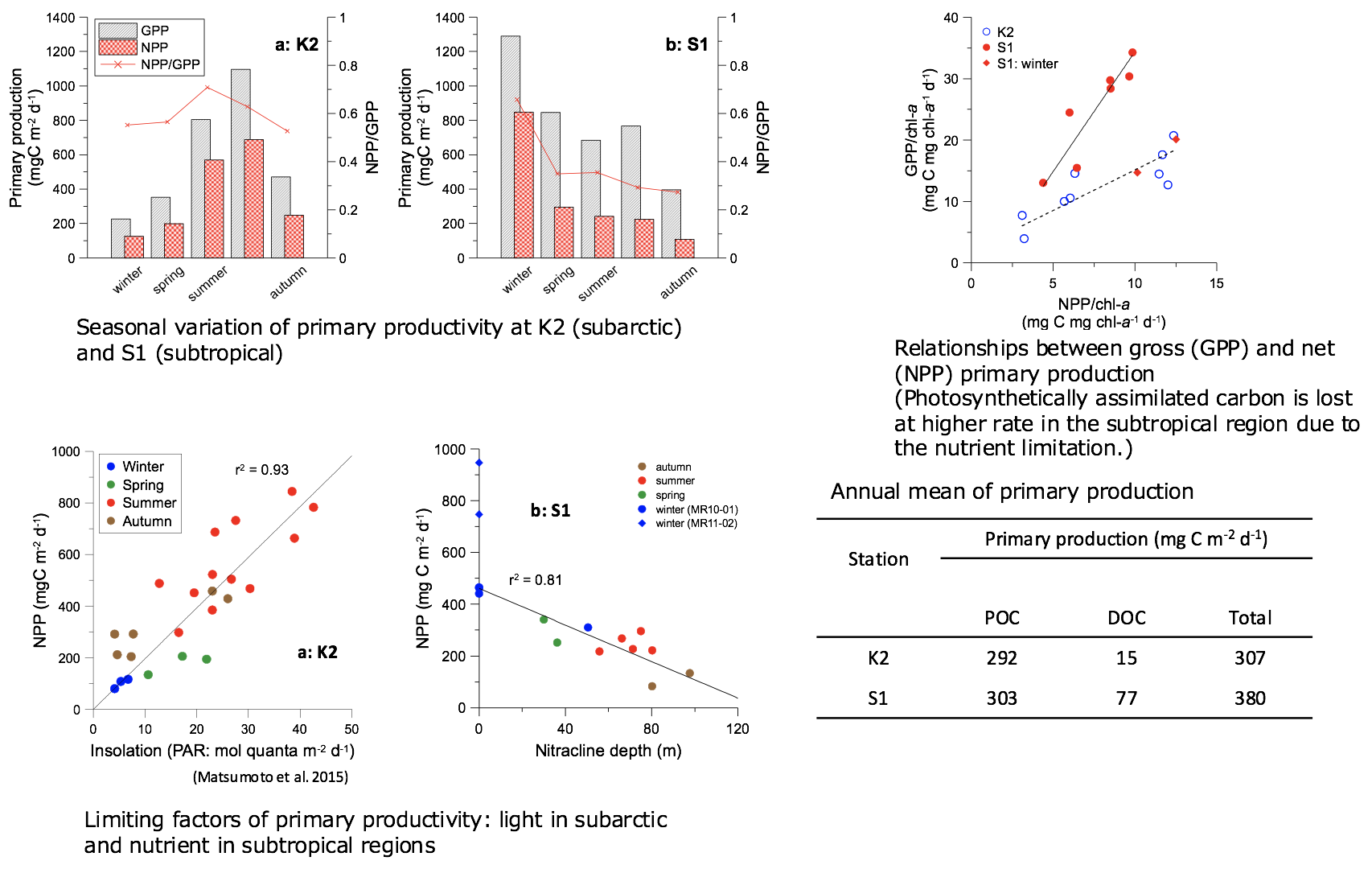Cruise observation in FY2015
The following three observational cruises were conducted.
(1) M/V Blue Fin/NOAA-PMEL (2015.8.28~9.10)
Subtropical region in the northwestern Pacific Ocean
Recovery and redeployment of the sediment trap at stn. KEO(2) R/V Shinsei-maru (KS-15-13: 2015.10.6~10.16) Off Fukushima
Recovery and redeployment of the sediment trap at stn. F1
(Investigation of radionuclides derived from nuclear accident)(3) R/V Mirai (MR15-05:2015.12.22~2016.1.12)
Eastern Indian Ocean
Relationship between aerosol and marine ecosystem
Topics
(1)Study of Missing Source of Nutrients to support primary productivity in the oligotrophic region ー Time-series sediment trap experiment at KEO station and analysis of NOAA-KEO buoy data -
Time-series sediment trap was turned around during NOAA cruise in August-September 2015. Chemical analysis of collected settling particles and analysis of NOAA-KEO meteorological / physical oceanographic data started.
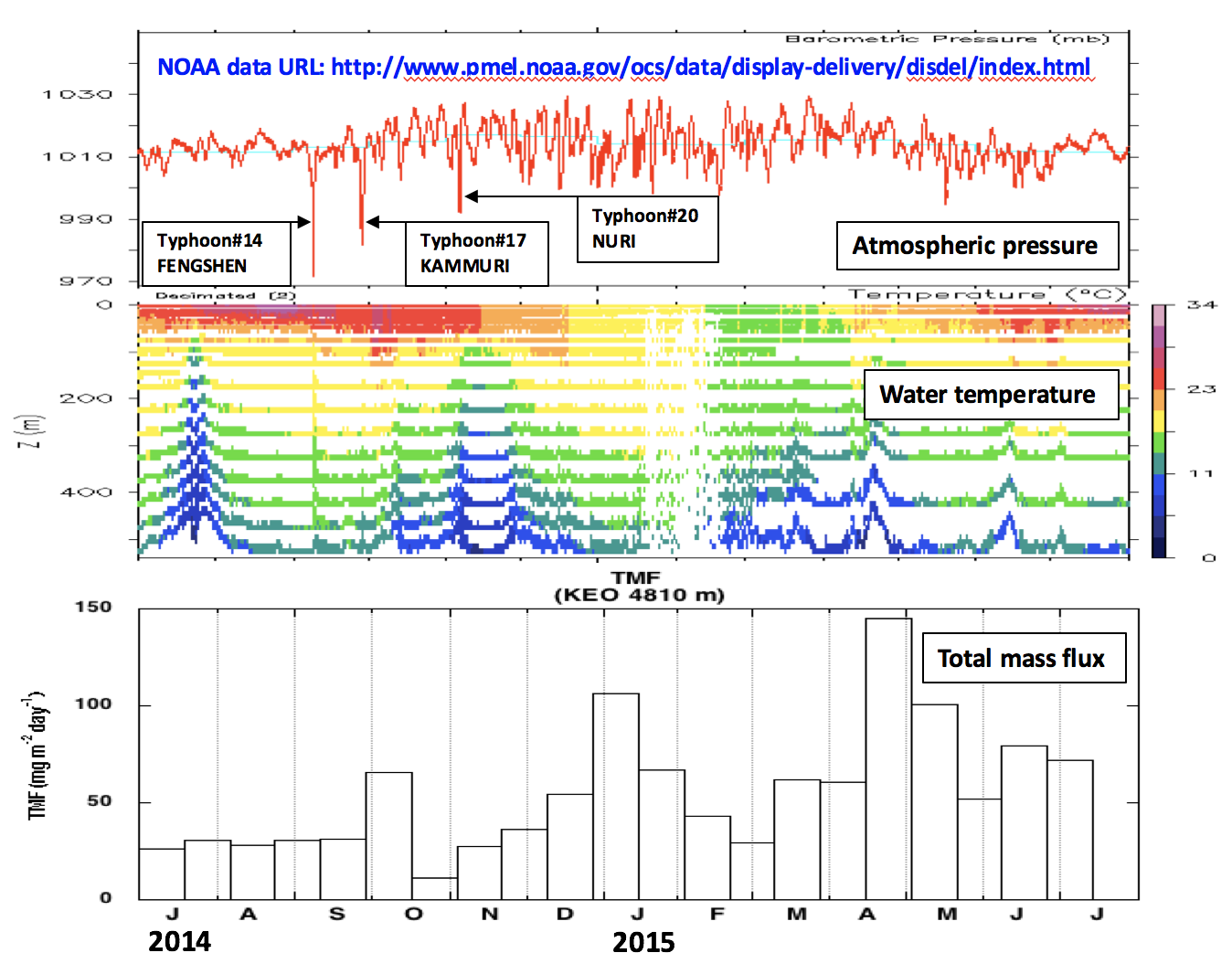
(2)Impact assessment of aerosol into marine ecosystem
Aerosol dissolution experiment
To estimate the impact of aerosol into marine ecosystem, we started an experiment of phytoplankton incubation with an aerosol dissolution by using the seawater of KEO site.
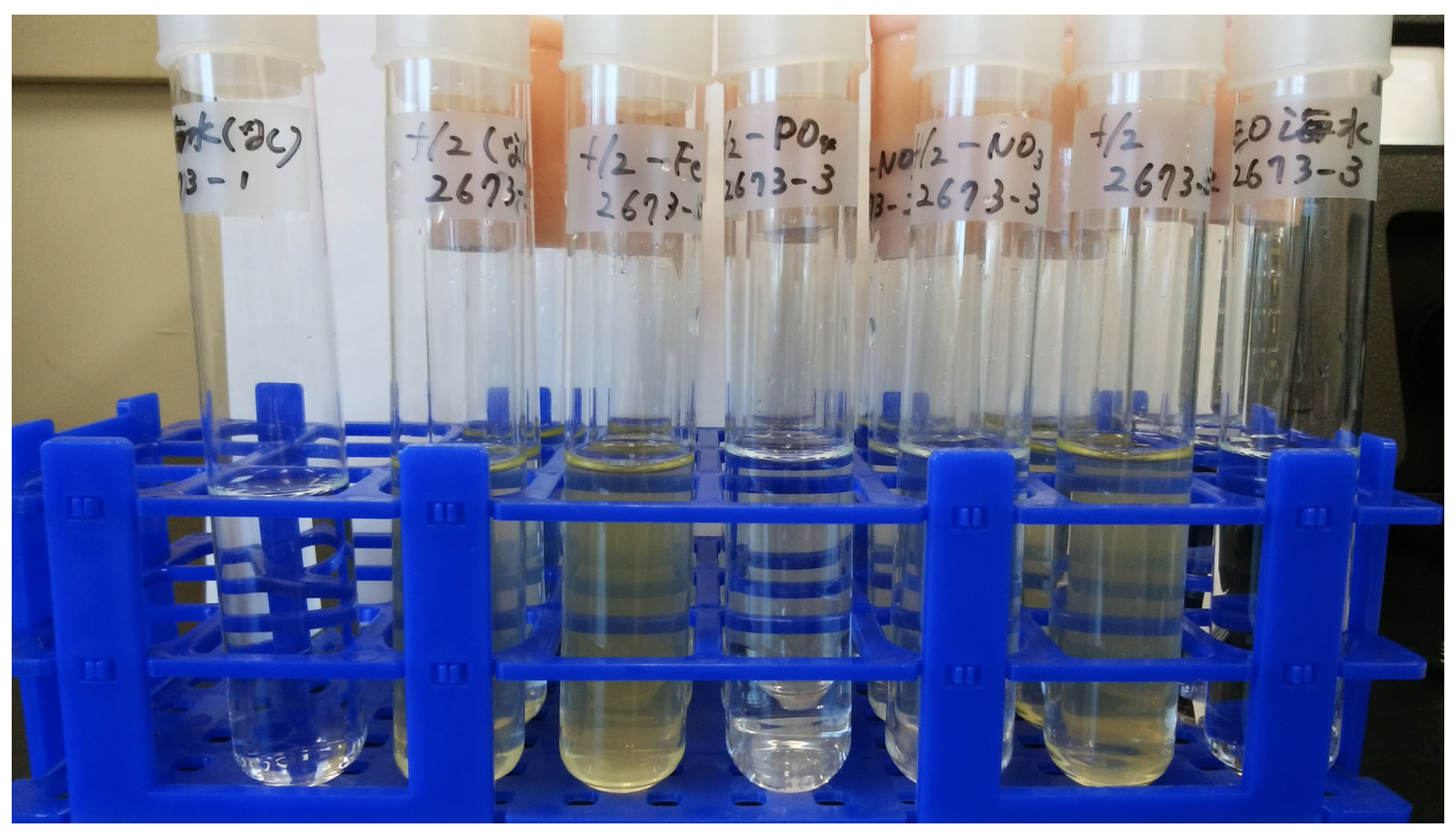
Observational cruise in the eastern Indian Ocean
Estimations of phytoplankton composition and primary productivity were conducted at MR15-05 cruise. We evaluate the impact of nutrient input into marine ecosystem via aerosol or upwelling in the eastern Indian Ocean.
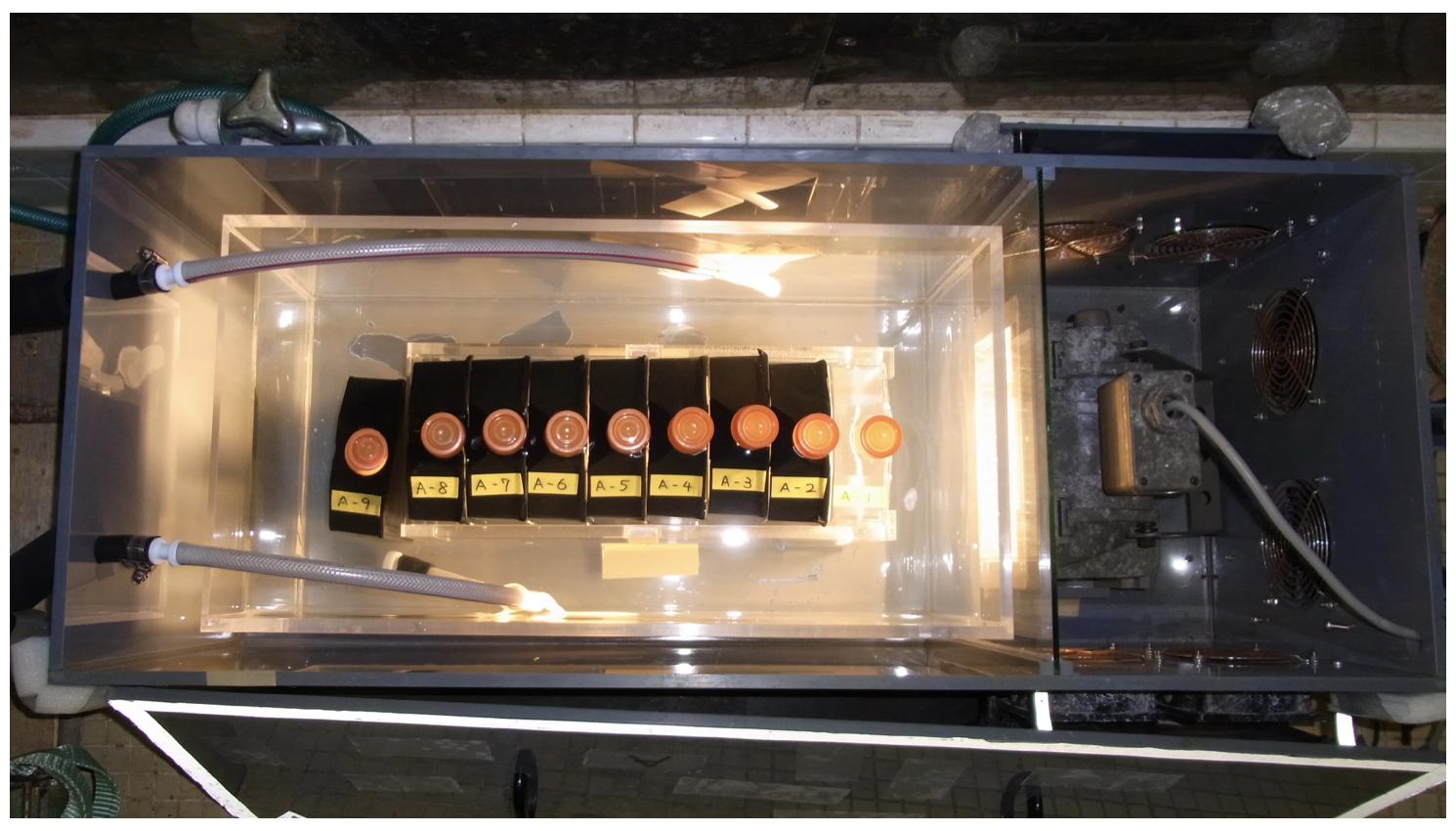
(3)Visiting scientist at the South China Sea Institute of Oceanology
As a visiting scientist at the South China Institute of Oceanology, Chinese Academy of Sciences from August 24 to September 25, 2015, a research collaboration to investigate the impacts of tropical cyclone passage and El Nino on phytoplankton biomass variability was conducted.


(4)The 3rd Asian Workshop on Ocean Color 2015
The 3rd Asian Workshop on Ocean Color 2015 was held from 8 to 10 December 2015 in Miyoshi Memorial Hall, JAMSTEC. Attended by scientists from China, Japan, Korea, US, and southeast Asian countries, new research collaborations have been established among the participating countries.
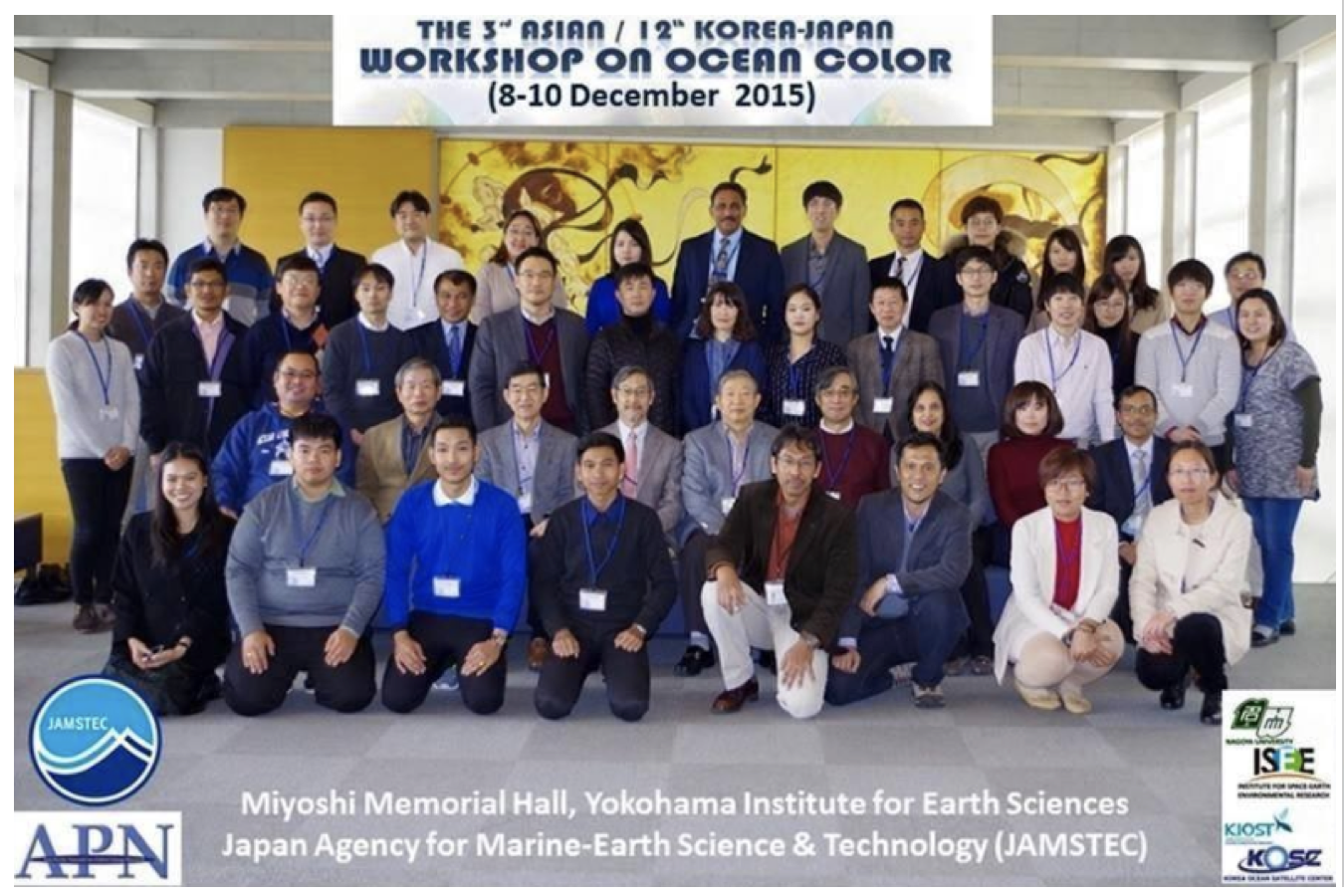
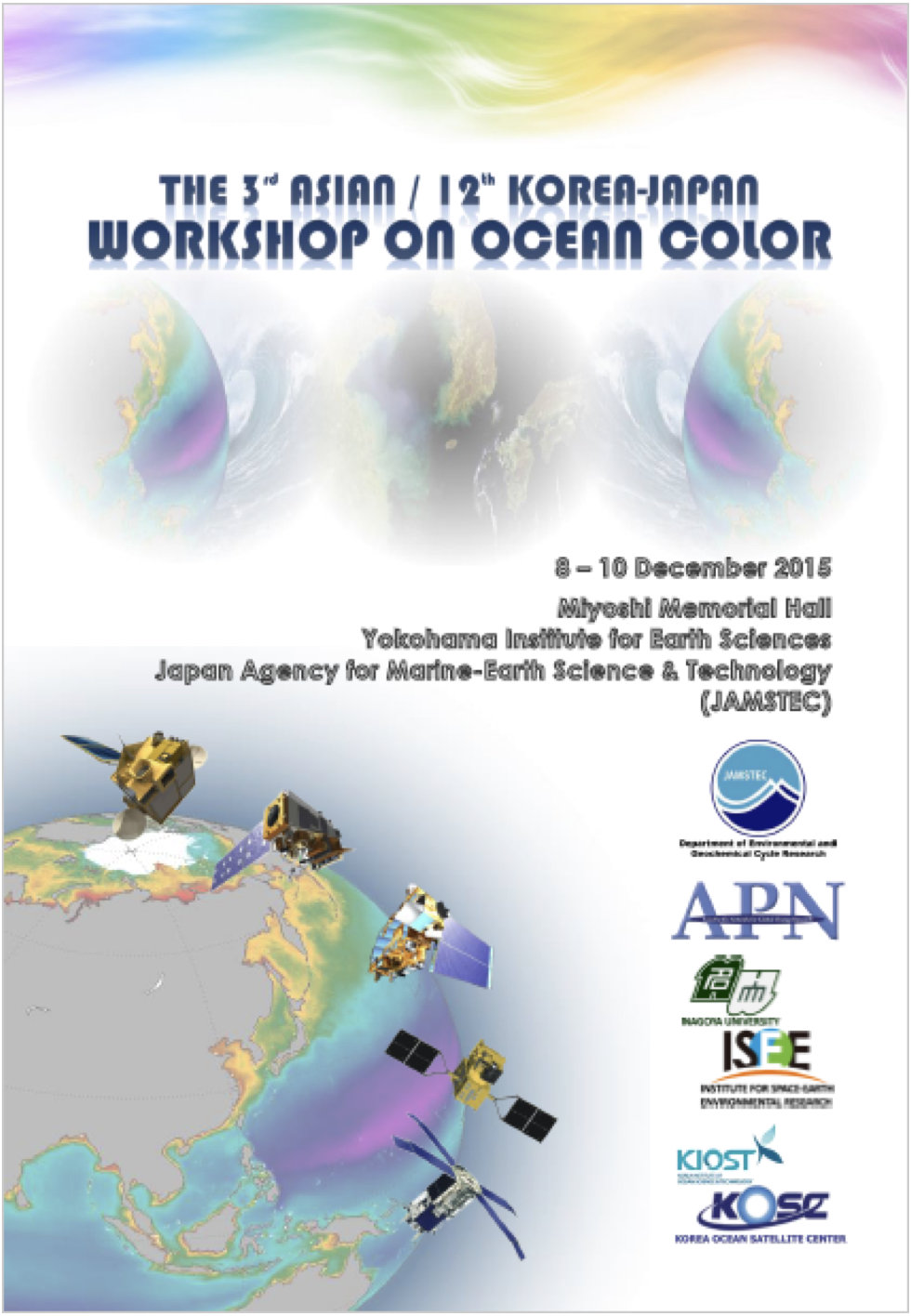
Research result
Investigation of radiocesium in the ocean emitted from Fukushima Daiichi Nuclear Power Plant (FDNPP) accident ー Re-suspension and lateral transport of radiologically contaminated seafloor sediment -
Buesseler, K.O., C.R. German, M.C. Honda, S. Otosaka, E.E. Black, H. Kawakami, S.J. Manganini and S.M. Pike (2015) Tracking the fate of particle associated Fukushima daiichi cesium in the ocean off Japan. Environmental Science and Technology 49, 9807-9816, doi: 10.1021/acs.est.5b02635.
(2015.8.15 Press release)
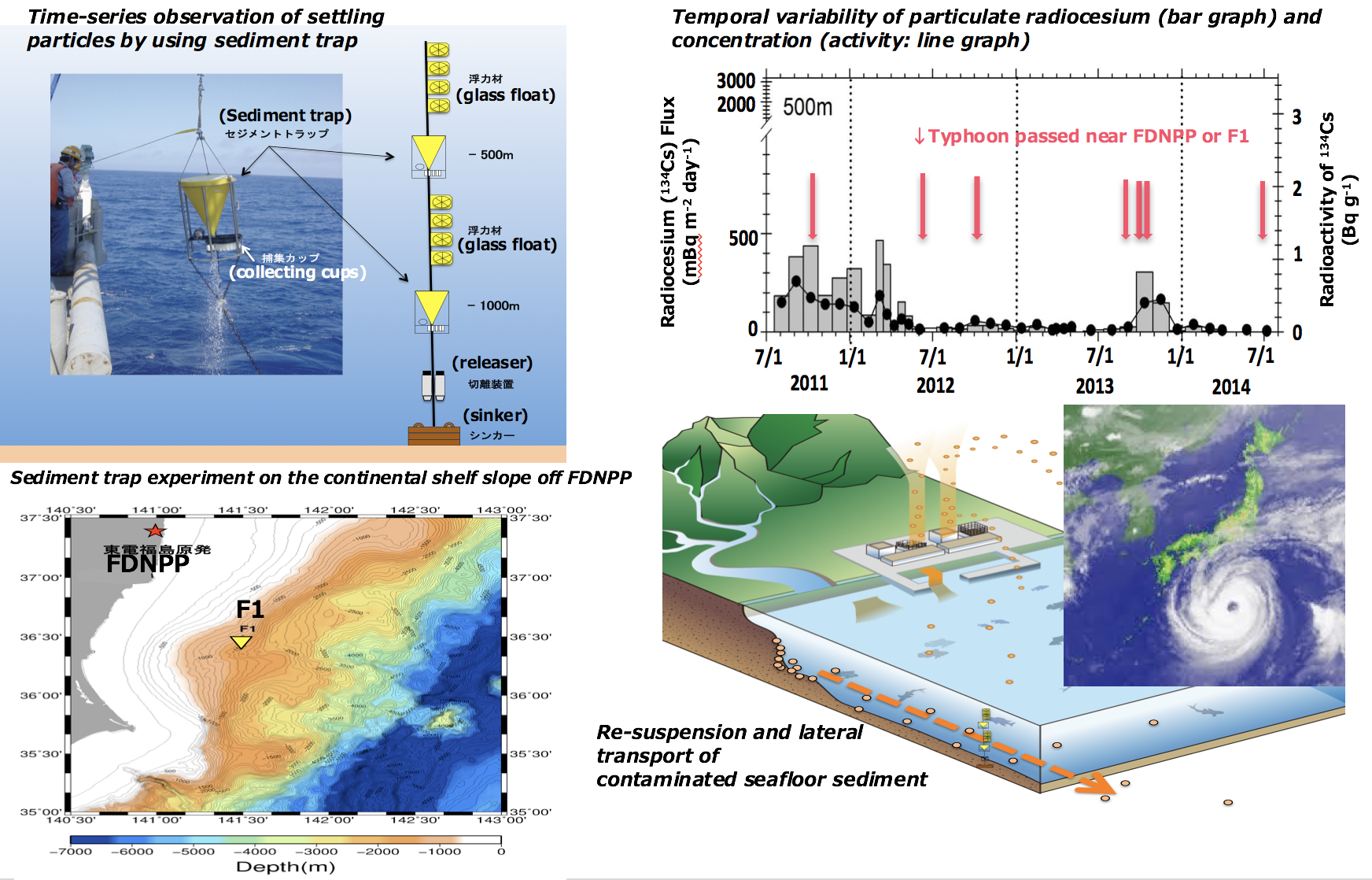
Possible contribution of aerosols from wildfires in enhancing ocean primary productivity during positive Indian Ocean Dipoles (+IODs)
Siswanto, E (2015) Atmospheric deposition—Another source of nutrients enhancing primary productivity in the eastern tropical Indian Ocean during positive Indian Ocean Dipole phases. Geophysical Research Letters, 42, doi:10.1002/2015GL064188.
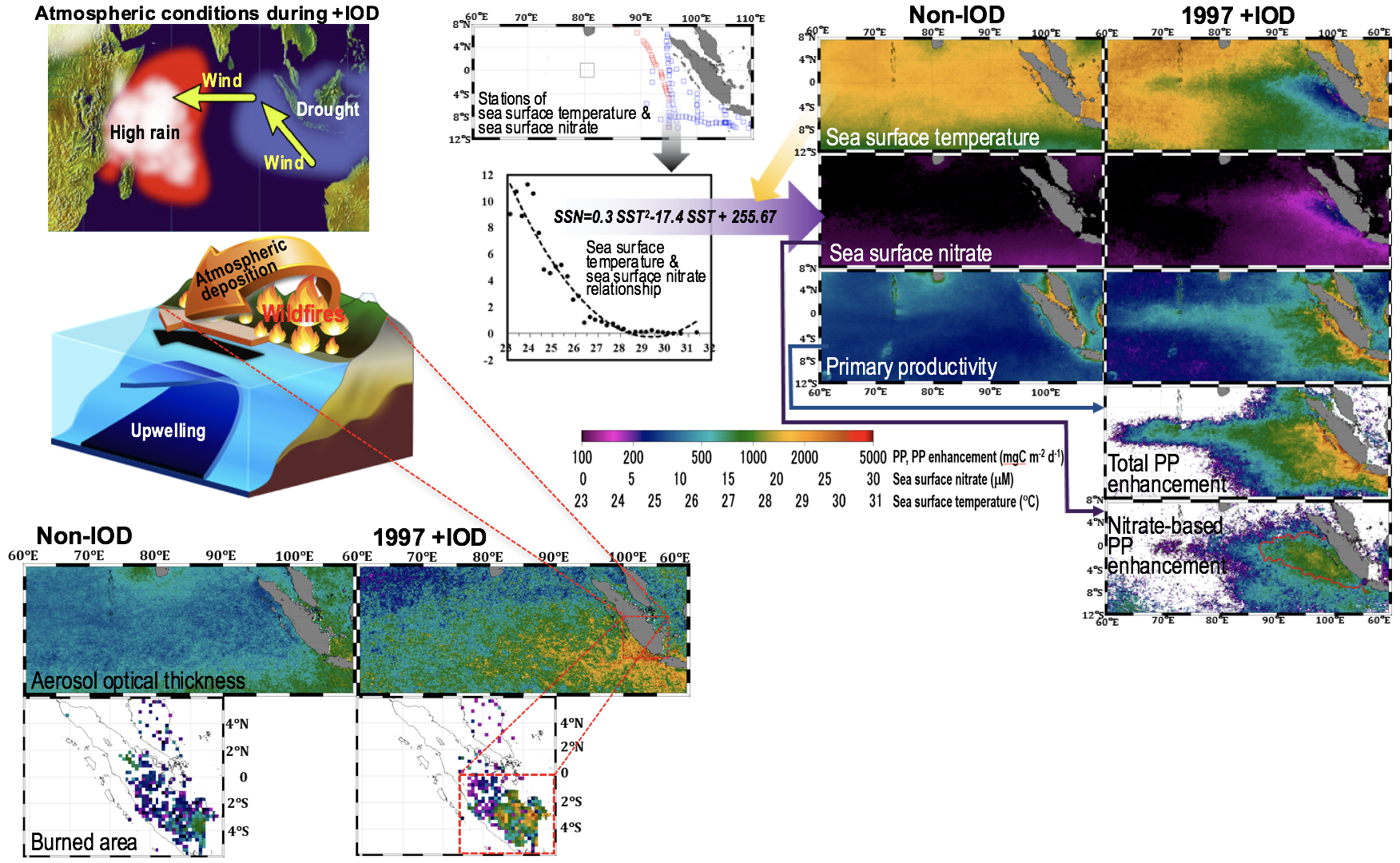
Long-term trend of chlorophyll in the northwestern Pacific Ocean
Siswanto, E, Honda MC, Matsumoto K, Sasai Y, Fujiki T, Sasaoka K, Saino T (2016) Sixteen-year phytoplankton biomass trends in the northwestern Pacific Ocean observed by the SeaWiFS and MODIS ocean color sensors. Journal of Oceanography. doi:10.1007/s10872-016-0357-1
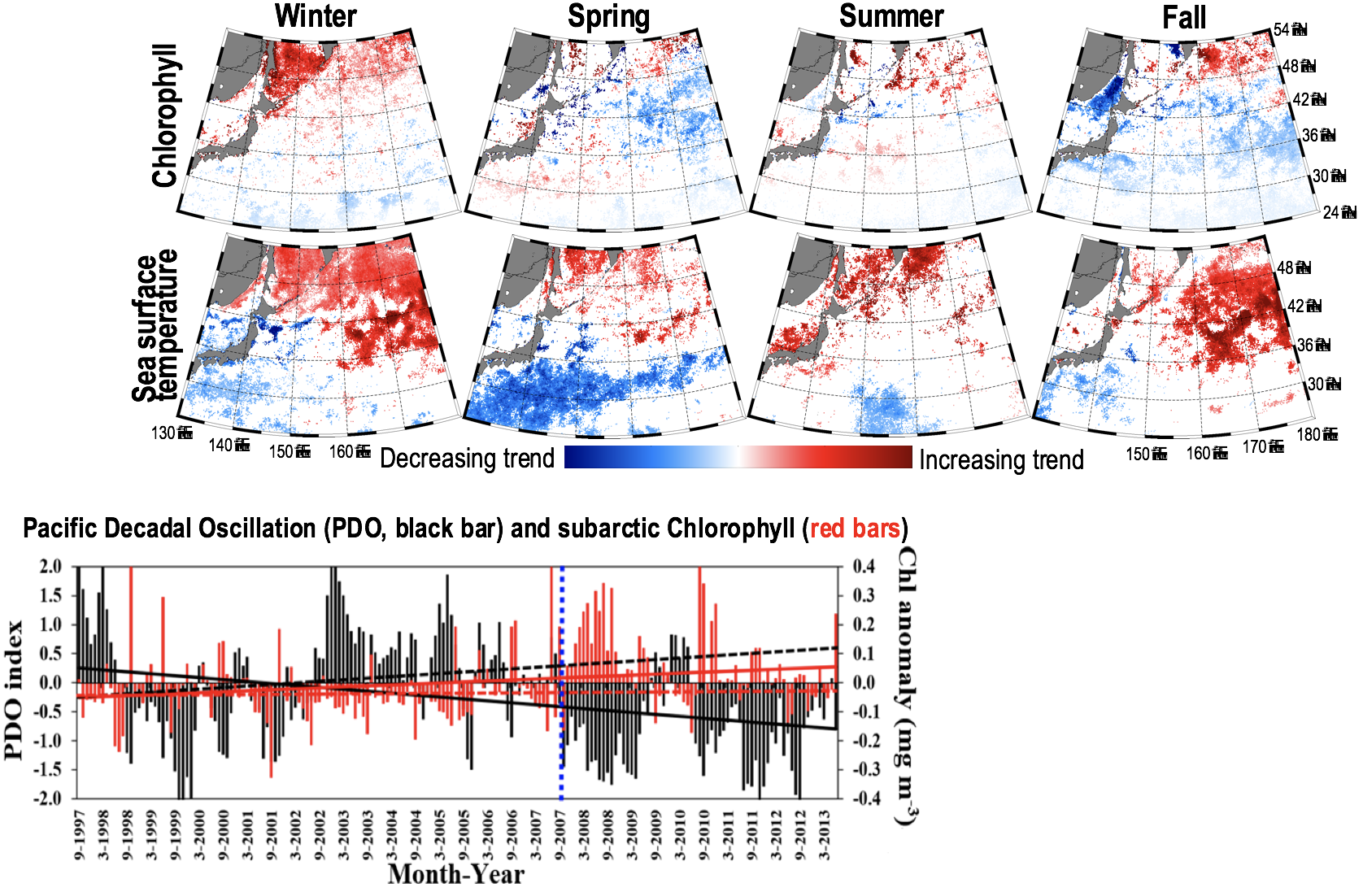
K2S1 project・seasonal variation of primary productivity
K. Matsumoto, O. Abe, T. Fujiki, C. Sukigara and Y. Mino (2016) Primary productivity at the time-series stations in the northwestern Pacific Ocean: Is the subtropical station unproductive?, Journal of Oceanography, doi: 10.1007/s10872-016-0354-4
